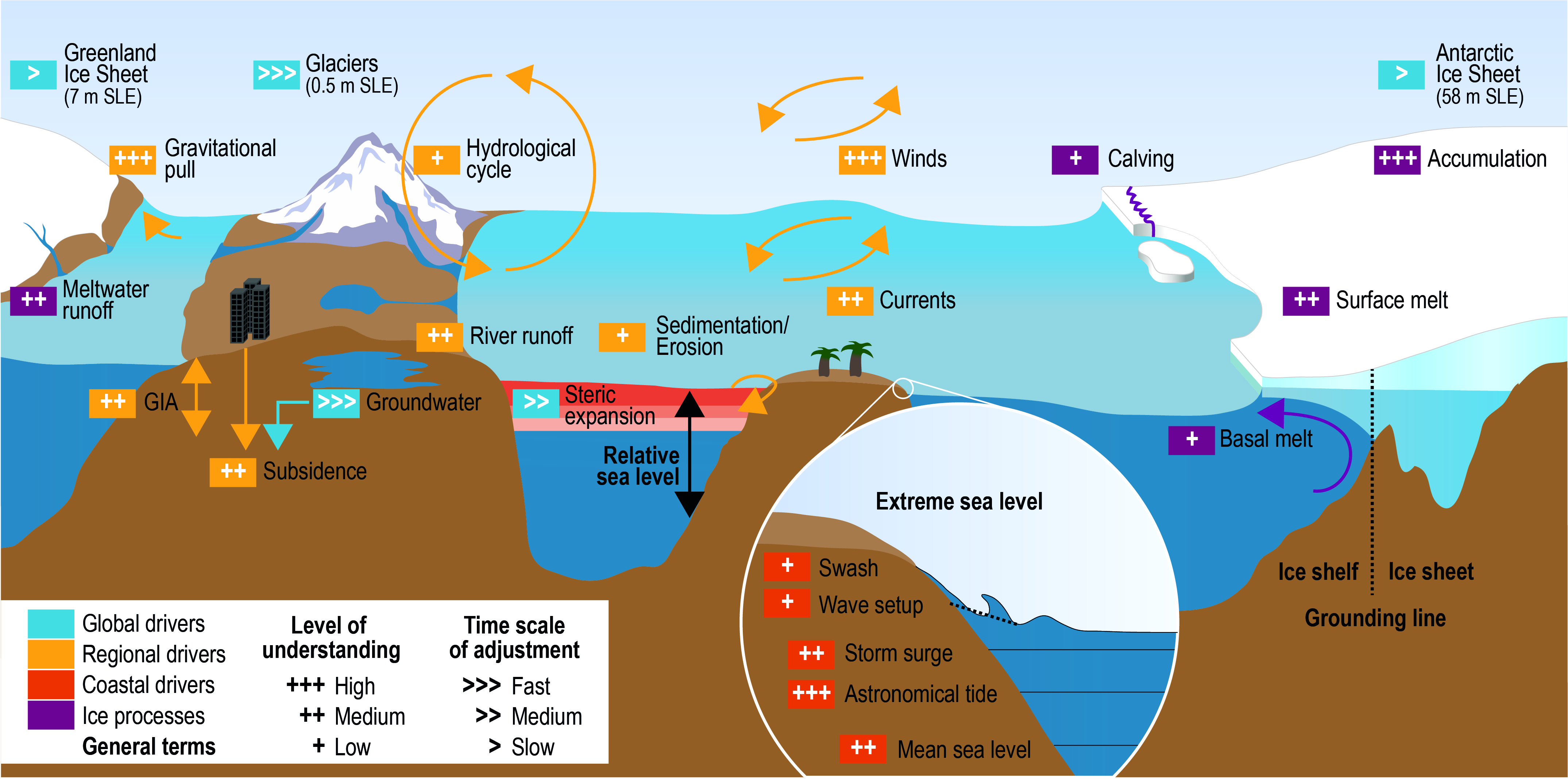
The East Coast of the United States is home to some of the nation’s most cherished historical landmarks. From the cobblestone streets of Boston to the colonial charm of Charleston, these sites tell the story of America’s past. But a growing threat is putting these treasures at risk: rising sea levels. As climate change accelerates, higher tides, stronger storms, and coastal erosion are endangering historic places that have stood for centuries. This article explores how rising seas are threatening East Coast landmarks, what’s being done to protect them, and why it matters to preserve these pieces of history.
The Growing Threat of Rising Sea Levels
Sea levels along the East Coast are rising faster than the global average. According to the National Oceanic and Atmospheric Administration (NOAA), sea levels in some areas are increasing by about 3-4 millimeters per year. By 2050, scientists predict sea levels could rise by 1 to 2 feet in many coastal regions. This might not sound like much, but even small increases can cause big problems. Higher seas mean more frequent flooding, stronger storm surges, and faster erosion of coastlines.
For historical landmarks, the stakes are high. Many of these sites were built centuries ago, long before anyone imagined the ocean creeping closer. Low-lying areas like Miami, Charleston, and parts of New York City are especially vulnerable. Flooding can damage fragile structures, erode foundations, and destroy artifacts. Saltwater can also seep into buildings, causing long-term decay. If nothing is done, some of these landmarks could be lost forever.
East Coast Landmarks at Risk
Several iconic East Coast landmarks are already feeling the effects of rising seas. In Boston, the historic Faneuil Hall, a hub of Revolutionary War history, sits just steps from the waterfront. Recent studies show that parts of Boston could face daily flooding by 2070 if sea levels keep rising. The nearby Paul Revere House, one of the oldest buildings in the city, is also at risk from storm surges.
Further south, Charleston’s historic district is a hotspot for flooding. The city’s colonial homes, churches, and cobblestone streets are often underwater during high tides or storms. Fort Sumter, where the Civil War began, is surrounded by water and increasingly battered by waves. In Virginia, Jamestown—the first permanent English settlement in America—is sinking as the surrounding marshes erode. Archaeologists warn that rising waters could wash away artifacts before they can be studied.
Even New York City’s landmarks aren’t safe. The Statue of Liberty, located on low-lying Ellis Island, faces threats from storm surges like those seen during Hurricane Sandy in 2012. The historic buildings of Lower Manhattan, including the South Street Seaport, are also vulnerable to flooding. These sites are not just tourist attractions; they’re symbols of America’s identity.

Why Rising Seas Are a Unique Challenge
Protecting historical landmarks from rising seas is not as simple as building a wall or moving a building. Many of these sites are protected by strict preservation laws, which limit how much they can be altered. For example, raising a building’s foundation might save it from flooding but could destroy its historical integrity. Moving a landmark to higher ground is often impossible—imagine trying to relocate the Statue of Liberty.
Cost is another hurdle. Reinforcing coastlines, building seawalls, or installing flood barriers is expensive. Small towns with historic sites often lack the budget to fund these projects. Federal and state governments can help, but funding is limited, and priorities often shift to protecting homes and infrastructure over cultural sites.
Then there’s the question of time. Climate change is moving faster than many preservation efforts. Scientists warn that some low-lying landmarks may become uninhabitable within decades. For places like Jamestown or Fort Sumter, the window to act is closing fast.

Efforts to Save Historical Landmarks
Despite the challenges, people are fighting to protect these treasures. Across the East Coast, governments, nonprofits, and communities are working together to find solutions. In Boston, the city is investing in “living shorelines”—natural barriers like marshes and dunes that absorb floodwaters while preserving the environment. Charleston is elevating some historic buildings and installing pumps to manage flooding. New York City has plans for a $1.7 billion coastal defense system to protect Lower Manhattan.
Nonprofits like the National Trust for Historic Preservation are also stepping in. They’re raising awareness about the threat and funding projects to save at-risk sites. For example, the Trust is working with Jamestown to document artifacts before they’re lost to erosion. They’re also pushing for climate-friendly policies to slow sea level rise in the long term.
Technology is playing a role too. In some places, 3D scanning is being used to create digital replicas of landmarks. If a site is damaged or lost, these scans can help preserve its memory. Drones and satellite imagery are also helping researchers track erosion and flooding in real time.
Why It Matters
Saving historical landmarks isn’t just about preserving old buildings—it’s about protecting our shared history. These sites connect us to the past, reminding us of the struggles, triumphs, and ideas that shaped the nation. Losing them would mean losing a piece of who we are. Imagine a future where schoolchildren can’t visit Jamestown or stand in Faneuil Hall. It’s a loss that goes beyond bricks and mortar.
There’s also an economic angle. Historical landmarks draw millions of tourists each year, supporting local businesses and jobs. In 2023, heritage tourism contributed billions to the U.S. economy. If these sites disappear, coastal towns could take a financial hit.
Finally, the fight to save these landmarks is part of a bigger battle against climate change. Rising seas are just one symptom of a warming planet. By protecting these sites, we’re also raising awareness about the need to cut emissions, invest in renewable energy, and prepare for a changing world.
What You Can Do
The threat of rising sea levels can feel overwhelming, but everyone can help. Supporting organizations like the National Trust for Historic Preservation is a great start. You can also advocate for climate policies in your community, like stronger coastal protections or green energy projects. Visiting historical sites and learning their stories keeps their importance alive. Even small actions, like reducing your carbon footprint, can make a difference in slowing climate change.
Looking Ahead
The East Coast’s historical landmarks are at a crossroads. Rising sea levels are a real and growing threat, but they’re not unbeatable. With creativity, funding, and determination, we can protect these sites for future generations. The clock is ticking, but there’s still time to act. By saving these landmarks, we’re not just preserving the past—we’re building a better future.
Read more :- Top 10 Best American Superfoods That Boost Immunity Naturally






